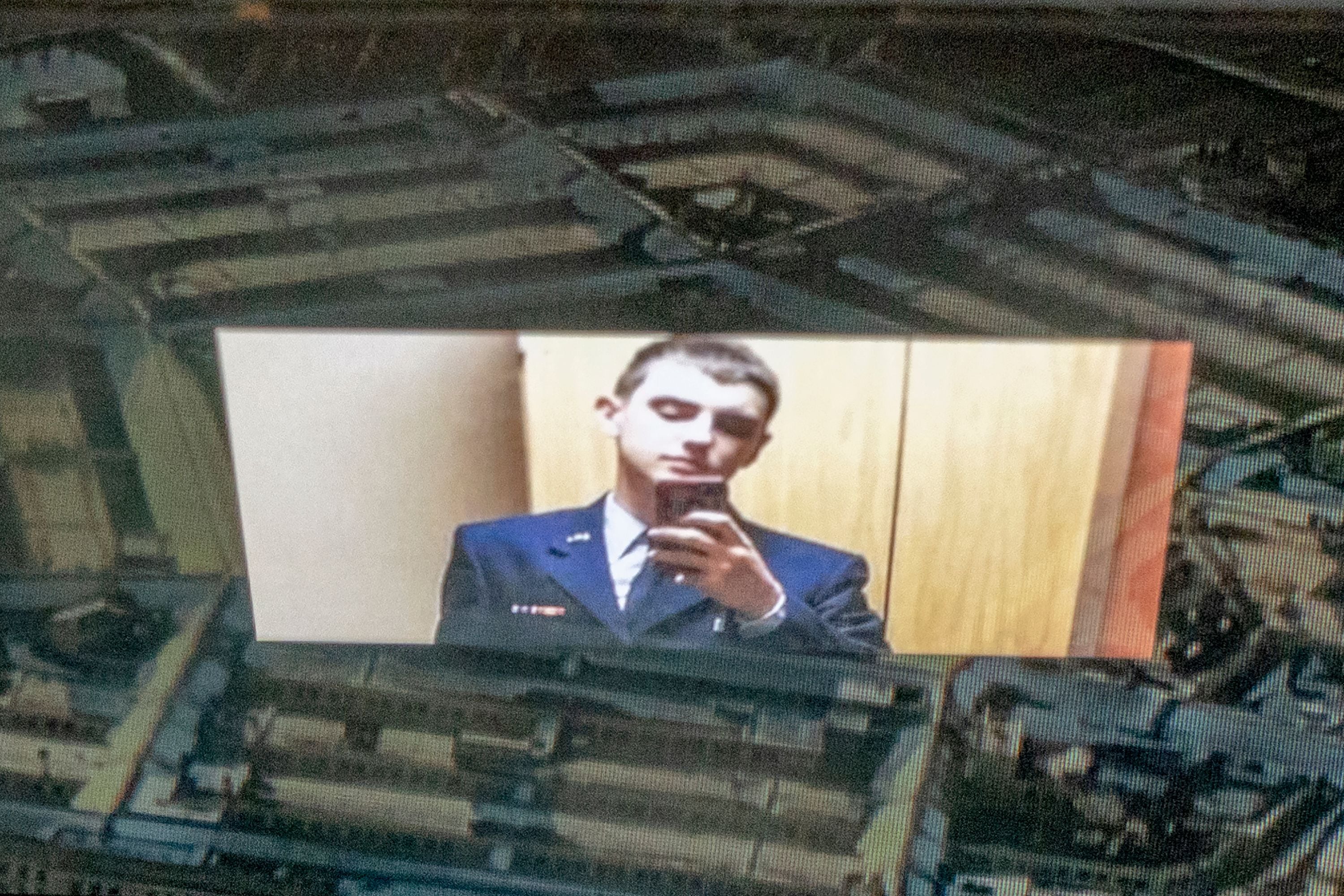JULIETT-01 MISSILE ALERT FACILITY, N.D. — It was one of the coldest days of 2013 at this nuclear missile outpost, with a wind chill near minus 67 degrees.
Senior Airman Mavrick Clark, 23, was out in the middle of it, performing maintenance on one of the 150 silos here. To complete the intricate repairs needed on a bit of piping protruding from the dirt from these underground weapons, Clark had to take his gloves off.
And then his goggles, so he could see.
He worked 10 minutes outside, then jumped in the truck to warm up for 20 minutes. Then he jumped back outside for another round of repairs.
It’s just one of the many unusual tasks that the men and women of the 91st Missile Wing take on. Above ground, the security forces teams here could help move snow; helicopter squadrons providing protection of the silos from overhead may also provide an overwatch of a maintenance technician when the weather gets threatening, to make sure they get back inside safely.
Below ground, crew commanders and deputy crew commanders sit side-by-side on 24-hour alert watches in bunkers 80 feet underground, ready to launch a missile if necessary.
“There’s no sun down here, this is my sunshine,” said Air Force Lt. Tia Hewuse, 23, of the 741st Missile Squadron.
Inside the underground bunker, Hewuse points to one of two gold locks she and crew commander Capt. David Anderson have to bring and methodically employ to secure information when their shift begins.
Except Hewuse’s lock is covered in gold glitter. The lock is one of the few, and possibly the only element of personality in the cement gray control bunker.
This alert facility, like the 10 missile silos it controls, doesn’t look like much from above ground. There’s just a few small tan buildings that break up hundreds of acres of flat farmland. A basketball goal post, spray-painted deep green so it pops from the wheat-colored landscape, is one of the few splashes of color out here.
It’s part of the reason that when Hewuse got assigned to Minot, instead of California, her fellow airmen pitied her.
Hewuse says they — like her family, friends and a lot of Americans — just don’t get it.
“The worst part about being in this career field is that America doesn’t understand what we do. But this … ” she said, gesturing to computer terminals that were last upgraded in the 1980s, a blast door that’s been around since the underground bunker was built in the 1950s, and the constant stream of query calls and messages sent to them from various national command authorities, from overhead bombers, “is what protects America.”
The four screens Hewuse and Anderson monitor have the names of the four other alert facilities in their 741st Missile Squadron, and each facility controls 10 silos, 70 feet deep, that encase a Minuteman III intercontinental ballistic missile.
The incoming messages are constant tests to see if she and Anderson are maintaining alert. When the computer’s left screen pings with an alert that a message has been received, it shows up as six letters — a code that is up to Hewuse and Anderson to decode and verify. They reach for duplicate classified binders based on the first two letters. The first binder that corresponds to the first two coded letters in the message tells them what message to open — housed in another classified binder. The next binder tells them what action to execute.
Most of the messages are targeting instructions or maintenance pings. The missiles are each about 50 years old and go through constant maintenance to check for corrosion and to look at the solid rocket fuel components to verify they are still viable.
Sometimes other traffic comes across the screen from the missile wing too, like notification that security forces or a maintainer like Clark will be above ground at one of the 150 silos total on this North Dakota missile field — because the wind and dust can get into the ventilators here, and without a filter change the air quality 80 feet below can degrade quickly.
If it was the president communicating with them, directing a launch, it would come over this screen as code.
To prevent an inadvertent launch, nothing on the missile would move unless both Hewuse and Anderson, and two other crew commanders like them in another underground facility, verified the code. Then each would have to open the locked container getting their keys, and insert them.
Minot has never had to fire from one of its silos. But if it did, it would take four keys from four separate crew commanders, to initiate launch. The computer only needs to verify two, but it won’t act without four separate orders from alert commanders. Because once all four keys are inserted and the computer has verified them, technology takes over. There’s no recalling the missile.
The gravity of the mission means that when Hewuse and Anderson are on alert, they don’t come back up above ground for anything until their shift is over. Meals are brought down to them on a slow-moving, caged elevator. There’s a bunk where they can take a shift sleeping if needed. Most of the time, they pass the time in the bunker preparing for other things — like pursuing a master’s degree.
The field makes a lot of things possible, Clark said. It made it possible for him to buy a house in Minot at age 20. The native Iowan loves the cold, and he plans to stay.
Hewuse said people don’t understand why she loves it, but promised she was so glad to be in Minot instead of sunny California. The extremes of weather and isolation make all of the people here count on each other.
“Ten people came to Minot” from her training class, Hewuse said, and they are now like her family.
Minot she said, “is so different. It’s all about the people here.”
Tara Copp is a Pentagon correspondent for the Associated Press. She was previously Pentagon bureau chief for Sightline Media Group.










